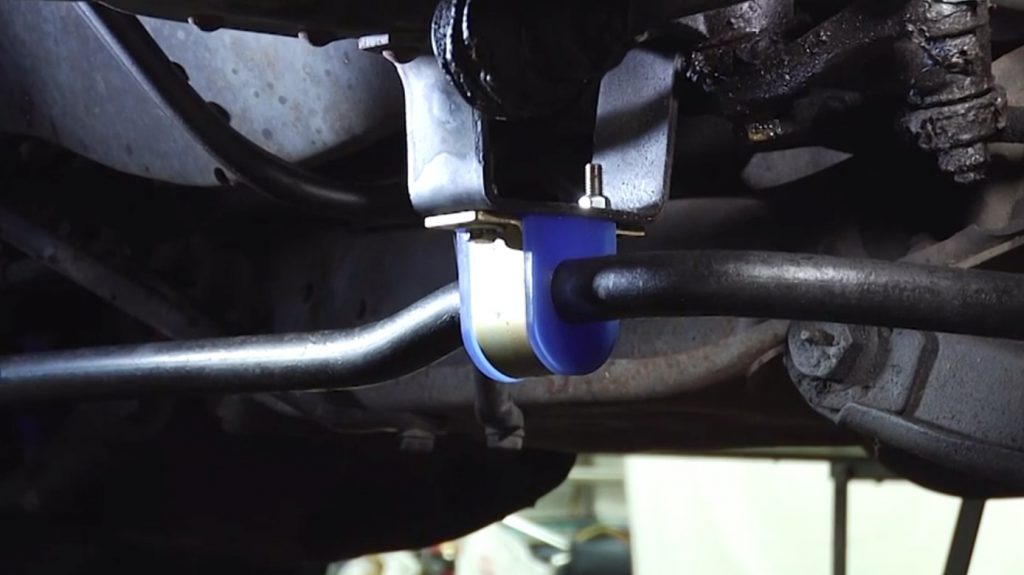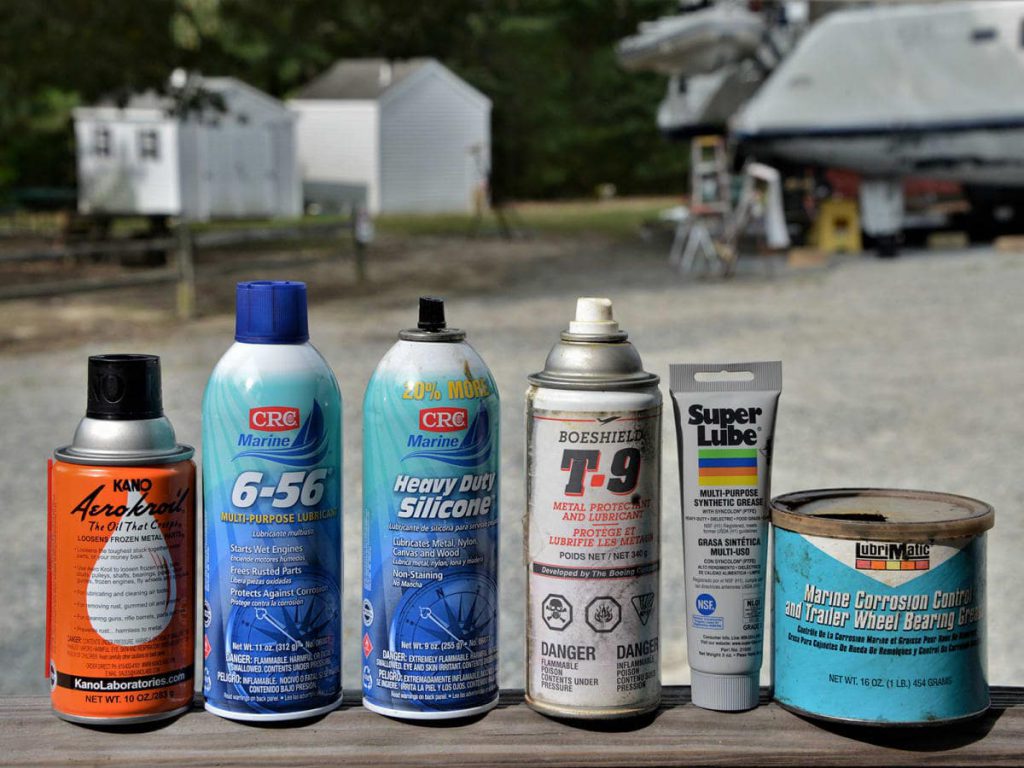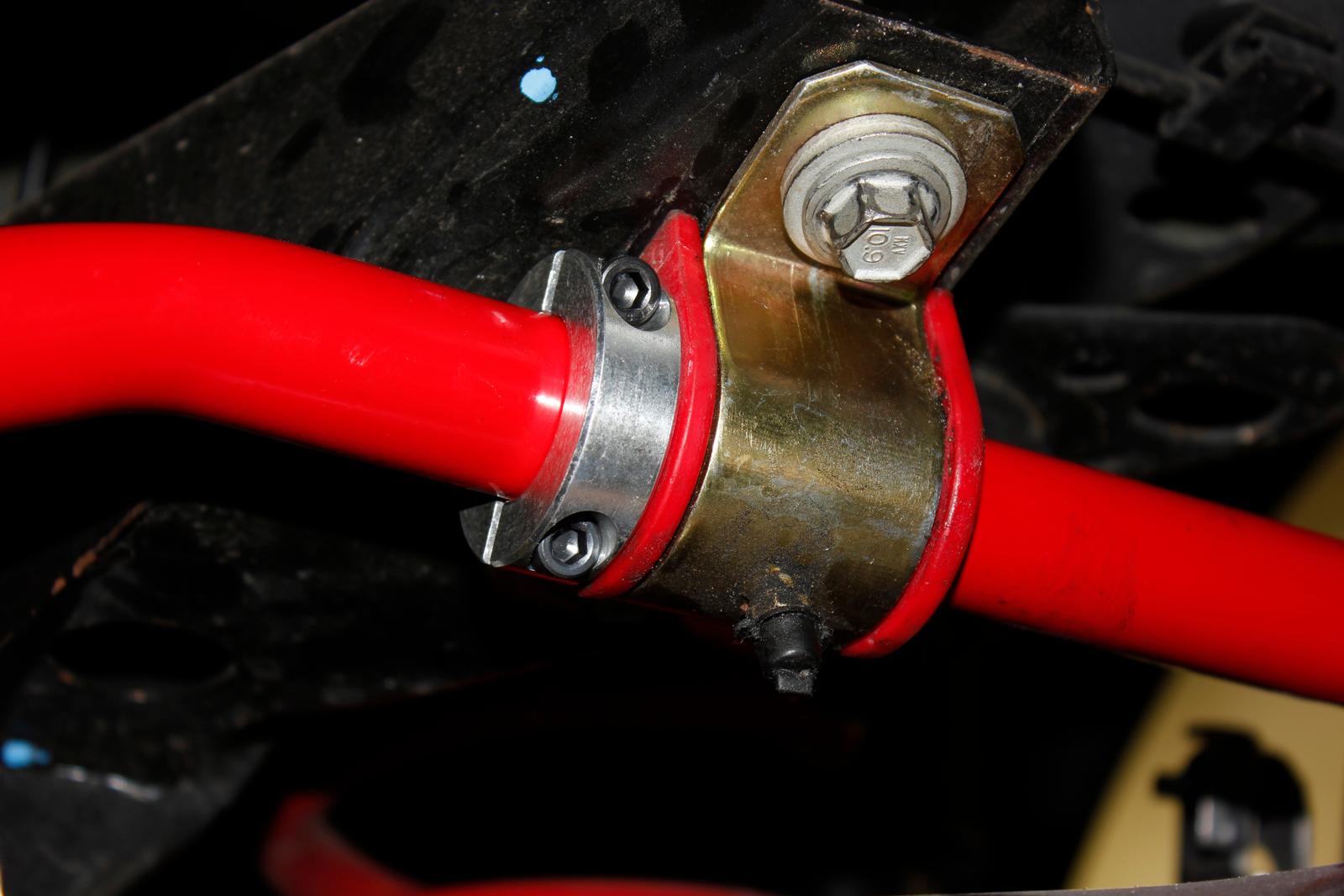Knowing how to lubricate sway bar bushings and understanding the role of the sway bar bushing will partly help you deliver the safest and smoothest track handling for your automobile on the road most of the time.
Contents
What Is The Sway Bar Bushings
Before learning about sway bar bushings, let’s go through the concept and function of the sway bar and balancing system. A sway bar, also known as an anti-roll bar, stabilizer bar, or torsion bar, is a part of the car suspension system that helps to reduce the rolling force during fast cornering or unusual crossing. It connects opposite (left/right) wheels via short swingarms with a torsion elastic linkage function. The sway bar increases the anti-roll stiffness of the suspension. In terms of shape, the sway bar is a U-shaped metal bar that connects both wheels on the same axle to the chassis. The ends of the rods are connected to the suspension on either side of the corresponding two wheels. And the middle part of the rod is connected to the vehicle’s body.
In more detail, the sway bar will keep the vehicle more stable, not leaning to one side too much when cornering. Because when cornering, the car’s weight will be pushed to one side, causing the suspension on that side to be pressed down, forcing the body to tilt. If the body is tilted too much to one specific side, it will cause the other two wheels to lose traction, which will make the whole car spin out of control (called oversteer).
The sway bar must be solidly attached to the car body, and the end of the bar near the wheels must also be in the same steady position to strengthen balancing and handling effectively. Structured like many suspension details in particular, and car components in general, sway bars are fixed in a safe area with bushings providing a restricted active range of motion without requiring bearings or moving elements.
With such advantages in all terms of anti-rolling, the sway bar and the bushings deserve to be checked regularly to avoid the issue of car rusting and malfunctioning during service life. After the due checking that you still have not gotten to the point of executing any sway bar bushings replacement, you can then think about lubricating the bushings.

Therefore, these bushings will gradually sink into worse states if working without proper and timely maintenance acts and lubrication. And at some point, they will destroy or even disturb the smoothness of the whole system.
What Sway Bar Bushing Lubricant Should You Use
The issues of rust or stiff movement that happened with the sway bar and the bushings can be solved instantly with a lubricant suitable for the vehicle type, bar type, or the nature of the bushings you are using. Generally, sway bar bushings are synthetic rubber or natural, or even polyurethane materials-based products. Along with rubber, polyurethane bushing is considerably popular among sway bar performance enthusiasts. As its characteristic is a bit more rigid and delivers better resistance to severe heat, affected ozone, and the mixed type of car lubricating or enhancing fluids that may tarnish rubber-made ones after a long time of use.
As you can see, bushings have many types that show different traits, and clearly that each will also have distinct ways to be maintained. No matter which materials are your ultimate option of bushings, when it comes to sway bar bushing grease, you should first remember to steer clear of all petroleum-based ones. Because they can spoil and soften the bar or rubber material the most while reducing efficiency and their lifespan. In the long run, petroleum can also affect the performance of the sway bar and related components. And when that happens, your sway bar will probably have to accommodate and endure a wide range of bad sway bar bushings. More specifically, bushings that break, rust, deform, and cannot properly do their job, let alone function smoothly and optimally. Excluding this unfriendly substance, you still have other outstanding and more suitable options.
In short, for sway bar bushings without a divided structure, a bit of standard grease is enough to smooth-slide it to the core. Some kinds of bushings even need no lubricant. Aside from this grease, original manufacturers suggest using water-based, silicone-based, or vegetable oil to smoothen the tolerance-limited bushings. Specifically, polyurethane-based bushing factories even provide retaining belts with the necessary lubricant amount for each routined maintenance.
For optimal function, you can be assured that these above lubricants will not react negatively or go against your bushing materials and can be cleaned easily without leaving any debris surrounding them. And exceptionally, if a fresh-buy bushing does not come with a factory-recommended lubricant or instructions for using it, it needs to be smoothened completely dry.
Among all types of lubricants floating on the market that may leave you confused, we have two notable choices for you, the dry Teflon sprays and the silicone-based lubricant.
One of the most recognizable benefits of silicone lubricant is that it tends to stay fixed in its supposed-to-be area and not easily wash out of any needed surface. While the flip side of it is that it draws and holds dirt or grit from the road along the way your car moves, turning the greased area into unfilled sandpaper that will likely fasten the wearing speed of the bushing surfaces.
On the other hand, according to experienced mechanics, Teflon dry spray has the optimal lubricating ability and does not attract grit. But the feature that makes this substance unable to score max points in this magical-lubricating check-up is the speed of drifting and sliding on obverses. So, if you want to lubricate sway bar bushings as effectively as possible, you will have to repeat the spraying step until the sway bar surface is covered evenly with enough substance.

In the end, the sway bar bushing lubricant you use will be the one that fits every demand of your bushings the most. Simple as said, however, you should be careful when choosing the lubricant to smooth your process and minimize the time of actual lubricating afterward.
>> Check out: Watch Out for These Sway Bar Links Symptoms
Tutorials On Lubricate Sway Bar Bushings
Below are some steps presented in a simple way to help you do the process without wasting too much effort and time.
- Step 1. Find an open space and park your car on an even surface. Install the emergency brake and, after each rear wheel, place a quality wheel clamp.
- Step 2. Lift the car’s front end with a proper car jack and place a bracket under the frame on each side of the front end. To ensure safety, you should carefully check the jack stands, wheels, and brakes to make sure the vehicle is not wobbled and held in a fixed, stable position before you get under the car.
- Step 3. Rotate all front wheels to the side to access the bushing position. Use a nail or other sharp object to mark on the bracket to determine its correct position before removing it, making it easier to put them back in place after completing the process.
- Step 4. Mark positions and remove the top and bottom swingarm brackets with an appropriately sized wrench. Remove the bolts and tilt the sway bar towards the vehicle’s rear. Move the bracket out of its fixed position.
- Step 5. Place the sway bar in a wide and unobstructed location. Grease it with a recommended lubricant or silicone grease. Simultaneously slide the bushings off the bar.
- Step 6. Depending on the bushing type and the manufacturer’s recommendations, you can lubricate the sway bushings with an all-purpose silicone lubricant or a dry Teflon lubricant. Then thread the bushings back to the sway bar until they come to the bar stop. Turn the split edge of the bushing towards the front side of the car.
- Step 7. Install the sway bar back into its original position under your vehicle. Place the brackets back in spots determined by the premade marks. Replace the bolts and secure the brackets.
- Step 8. Rotate the front wheels and repeat the lubrication steps above for the bushing on the other side of the vehicle.
After completing the procedure on the other side, jack the vehicle off the stand, put it aside, and gently lower the car’s front end to the ground. Disconnect the emergency brake and detach the wheel clamps.
So the sway bar bushings lubricating process is now completed within 8 simple and quick steps. You can practice and refer to a few more sources of information or videos for a more visual follow-up. The steps are not too difficult and take a lot of effort. We wish you all success implementing them.
Wrapping Up On Lubricate Sway Bar Bushings
Overall, lubricate sway bar bushings are quite a vital maintenance act if your vehicle is equipped with a standard system. With this lubrication, you will not have to wander too much about whether to do it or not, as it will always be a good idea and not excessive. Prepare a simple kit and roll up your sleeves to perform this simple lubricating procedure following our instructions and recall everything you have just learned about the sway bar.
For more updated car maintenance tips, follow Car From Japan today.



